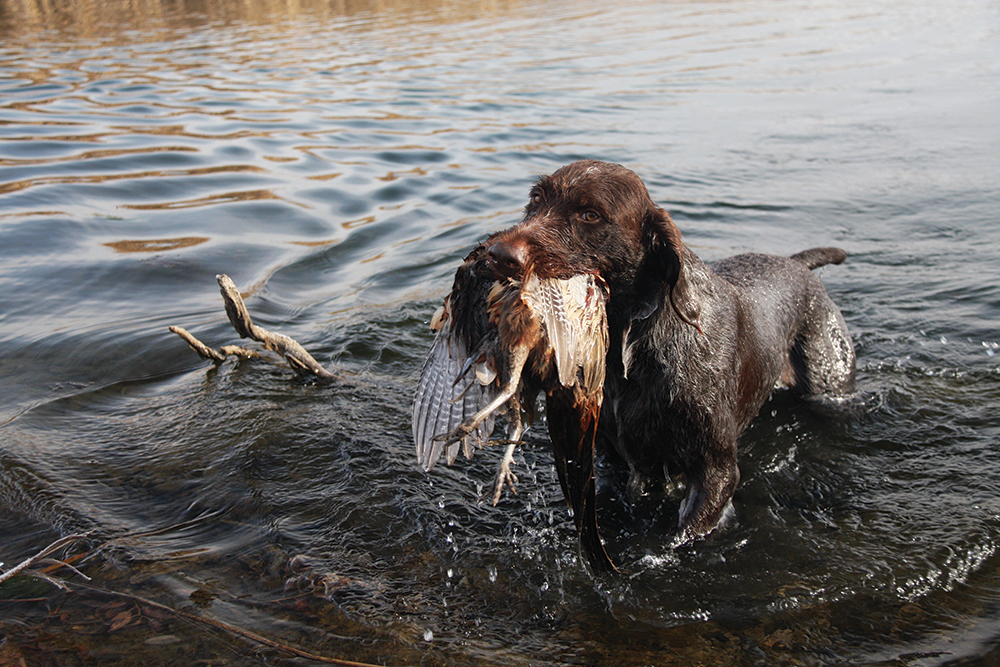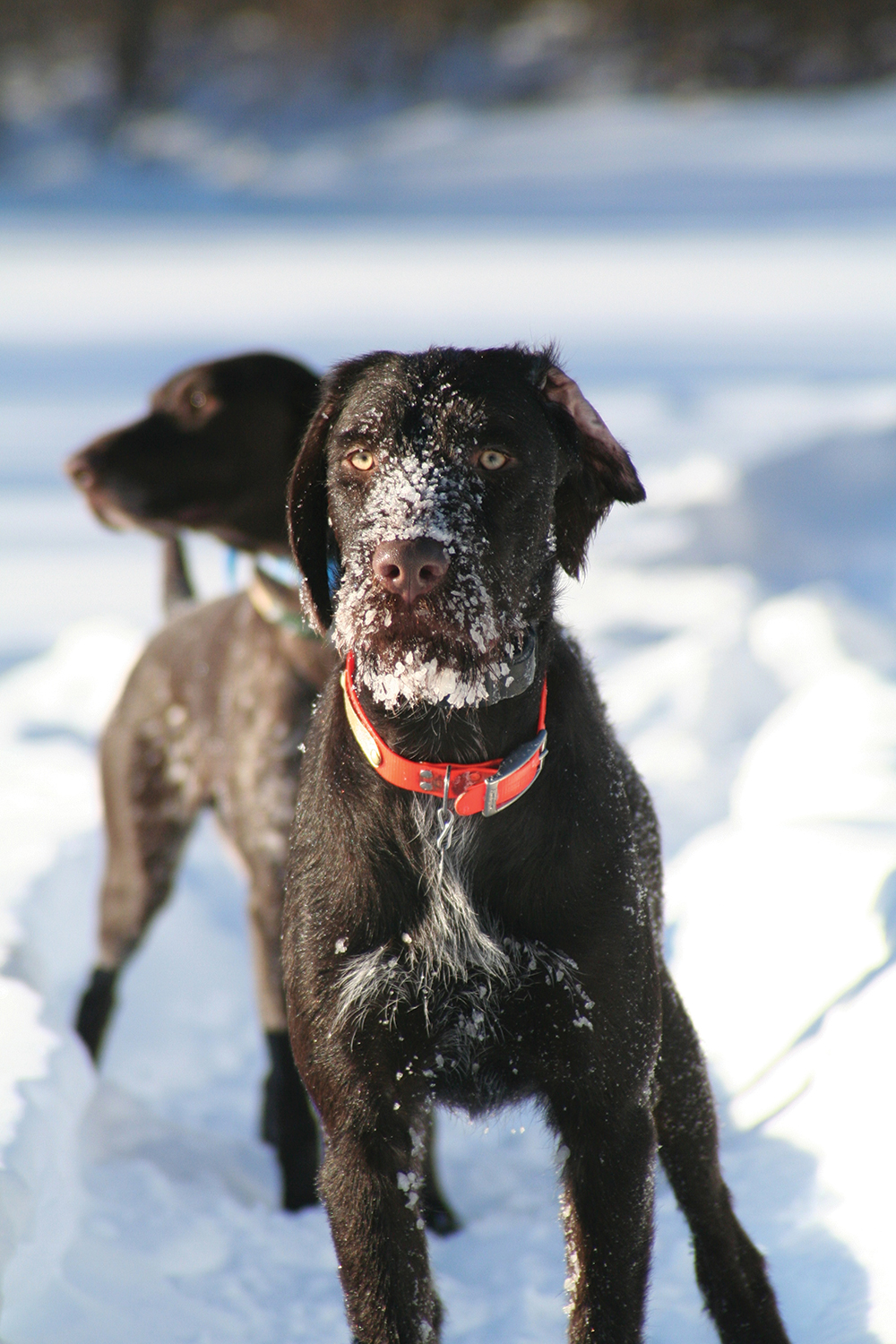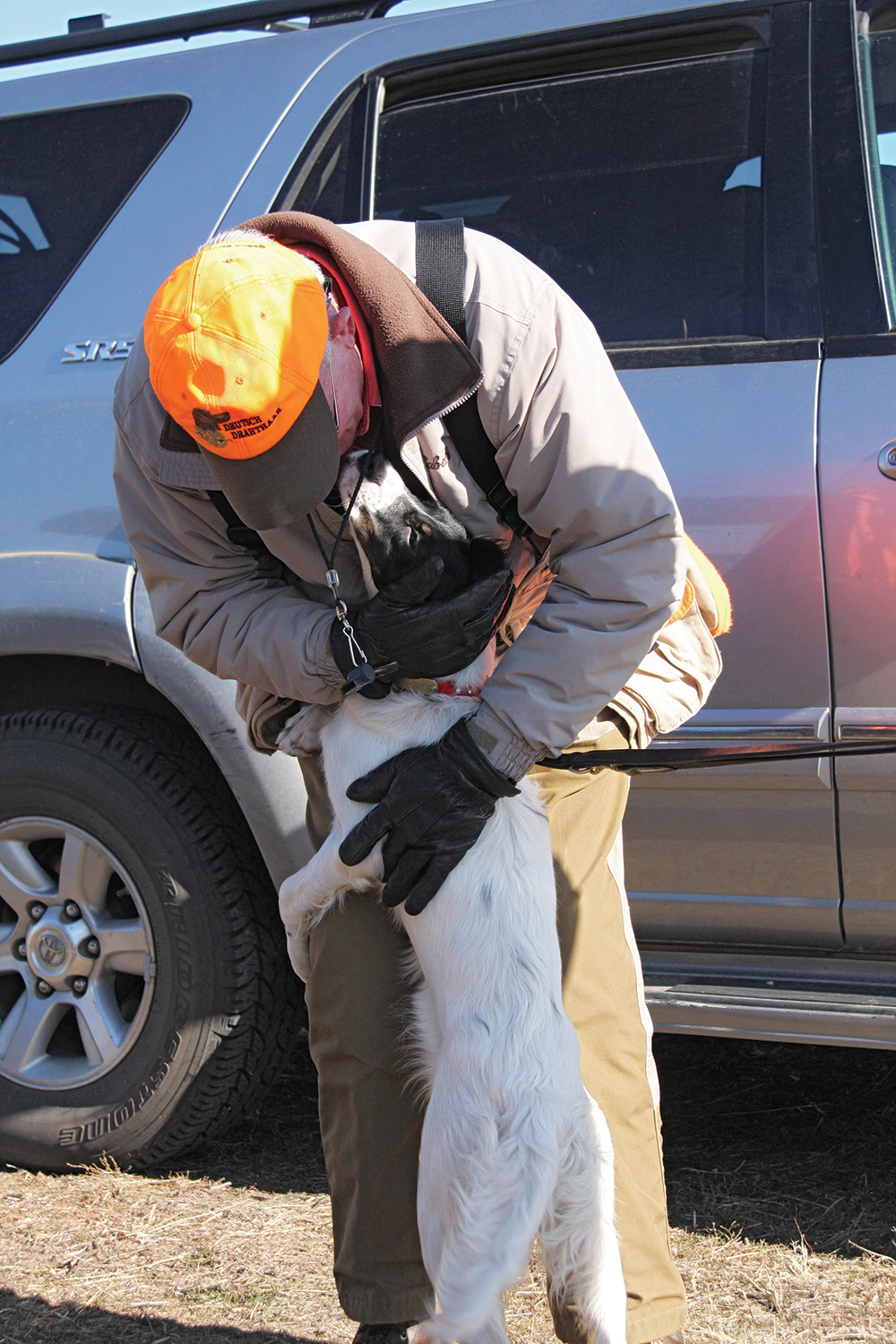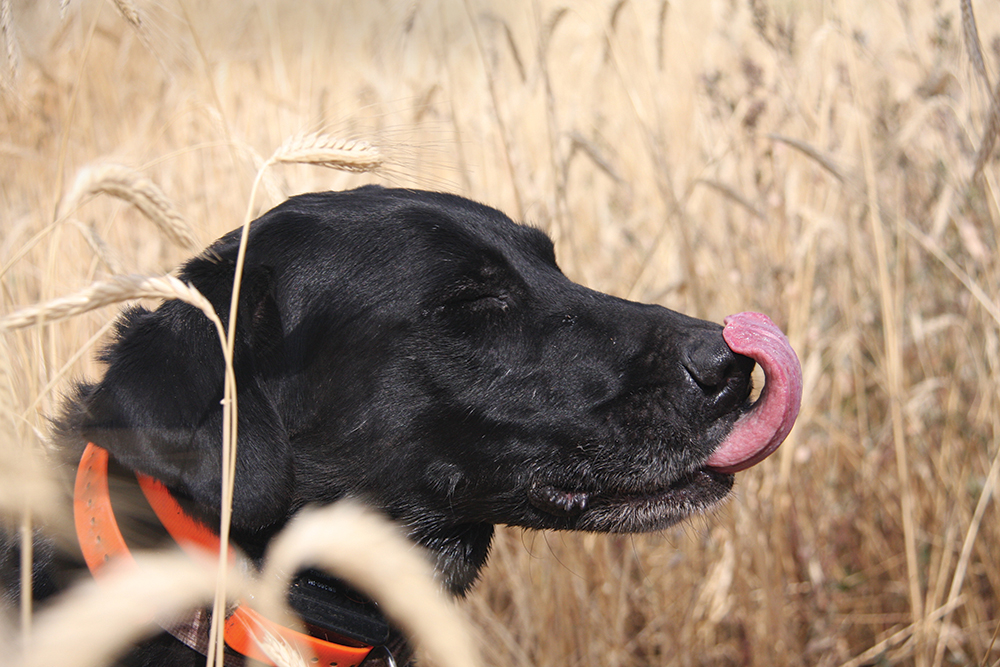Canine Concerns: Methods of Ensuring the Health and Fitness of Your Hunting Dog

Hunting presents challenges, for hunters and hunting dogs alike. The elements—extreme cold or extreme heat—can be dangerous. Additionally, the remoteness of many hunting coverts means no access to medical care—sadly, should a life-threatening condition arise, reaching a vet is just not possible.
Some dangers are difficult to recognize, particularly when a single-minded bird dog has its energy and attention focused 100 percent on its job. How many of us have seen a dog with a deep barbed-wire gash pay no attention to the wound and keep working bird scent? Or a dog running for hours but still showing no interest in a bowl of water? A bird dog’s drive can override its physical state, with no visible indication that a problem is brewing.
We need to know how to recognize the symptoms of potentially fatal conditions in our dogs and how to initiate treatment when we can’t get to an emergency vet. We covered bloat and torsion and low blood sugar (hypoglycemia) in the article here; now let’s examine hypothermia and heat stroke.

Hypothermia
Although it was barely perceptible, the Weimaraner’s hair seemed to be raised slightly. The air temperature was no more than 18 or 20 degrees Fahrenheit, still the dog was panting. He seemed disoriented while he and his owner waited for the rest of their group to meet up for the hike back to the cabin. Then the dog’s breathing grew shallow. Hypothermia had set in.
Ruger had hunted hard all day, polishing his slinky point on each ruffed grouse he encountered. After a late-afternoon squall soaked dog and hunter, the temperature dropped dramatically. Ruger’s owner was shivering, but he knew that as soon as they started walking, he’d warm quickly inside his thick waxed-cotton jacket. Ruger was still wet; fortunately his owner understood the dog needed heat, ASAP. He wrote a note and posted it by his blaze orange cap, where his hunting friends could easily see it. Grabbing Ruger, he raced back to his truck, where he cranked up the heat and wrapped the dog in two blankets that were always stored under the seat. Happy ending. Ruger had reached a moderate level of hypothermia, as his body temperature dropped to 85 or 90 degrees from the norm of 101 to 102.5 degrees. If that core temperature had fallen below 82, he probably would have been unconscious, in a potentially fatal condition.
We tend to think of waterfowl dogs being the ones at risk of hypothermia, retrieving in icy water and sitting in frigid duck blinds. However, upland dogs in cold, icy, or wet conditions can become hypothermic, too. Shivering doesn’t always mean the dog is cold, since many hunting dogs shake, rattle, and roll from anticipation or excitement. Symptoms of hypothermia progress from shivering to stiffness, weakness, and disorientation, followed by stupor, collapse, and unconsciousness. As the dog’s body temperature drops, its pulse, breathing, and mental status deteriorate.
Immediate treatment for a dog in the early stages of hypothermia is what Ruger’s owner did—blankets and a heat source. If the truck or your home are too far away, it’s best to build a fire and rub the dog vigorously with a towel or soft jacket to create frictional heat. If the dog is conscious and will drink, small amounts of warmed fluid help raise the body temperature.
With hypothermia—and unlike hyperthermia, when body temperature is elevated—it’s okay to raise the dog’s body temperature quickly. Taking the dog’s rectal temperature can determine the severity of the hypothermia. With severe hypothermia, professional medical intervention such as the introduction of heated intravenous solutions is critical.


Heat Stroke
Maybe you heard about the tragic pheasant opener in South Dakota in 2003 when more than 100 dogs died of heat stroke? Temperatures that day exceeded 80 degrees. Some of the dogs were not conditioned to run in the heat; some were simply out of shape. Other dogs were in great shape, but the heat overtook them before their owners realized what was going on. Some hunters couldn’t get the veterinary help they needed in time.
Dogs have higher body temperatures than humans, and it takes them longer to cool down than it does us. Although they can dissipate heat by panting, the only surfaces that “sweat” on a dog are its nose and footpads. On warm days, the temperature down at a dog’s running level, close to the ground, can be much hotter than up at our breathing level. (An early-morning dew can lower the temperature some.) If the air temperature around us is 80 degrees, by afternoon, in thick hot grass, it could be more than 100 degrees at dog level.
I saw a young black Lab collapse by the side of a pond one summer day after fewer than 15 minutes of exercise—clearly she was approaching heat stroke. Lyric, the young Lab, had been in her outdoor run for the afternoon while her owner was at work. The kennel was probably in the sunlight for at least an hour as the sun descended. She had knocked over her water bowl and was probably dehydrated. Once she was let out, excited to play, she made retrieve after retrieve, but was never in the water long enough to permit cooling while her body ramped up its exertion, and she never paused to take a drink. When she fell to the grass and could not be coaxed into rising, her owner picked her up and ran to his truck to race to the nearby vet. On the way, with the air conditioning on, Lyric perked up. After having small amounts of water, within minutes she was completely fine.
Besides heavy panting, symptoms of overheating include excessive thirst, dark red gums, heavy salivation or drooling, and poor coordination. You can test for dehydration by pinching a roll of skin on the back of a dog’s neck. If it “sticks” up for any length of time—rather than flattening back quickly—hydration probably is needed. Further symptoms of heat stroke include glassy eyes, weakness, vomiting, bloody diarrhea, increased pulse and heartbeat, collapse, and seizures. Not pretty. Typically, a dog’s temperature should be 101 to 102.5 degrees Fahrenheit. When a dog’s temperature hits 109 degrees or higher, within minutes heat stroke can cause critical damage to the dog’s brain, liver, heart, and nervous system.
Cool a hyperthermic dog carefully. First, move the dog to a cool place—shade, a creek, under a fan, or to an air-conditioned building or vehicle. Never put ice on the dog or immerse it in ice. Place cool, wet towels or pour cool water over the dog, concentrating on the head, neck, and undersides of the legs. The cooling process must be gradual, so the temperature drops slowly. If the dog’s temperature drops too quickly, the risk of damage to internal organs increases. If the temperature gets down to 104 degrees and the dog can keep his or her head up, offer sips of water; too much water can induce vomiting. Once the dog’s temperature reaches 102.5 degrees, stop the cooling process. If the dog remains unresponsive, get to an emergency vet as quickly as possible. If the dog had seizures or had been unresponsive for a while but seems to be recovered, you should still get to a vet right away.
To prevent canine heat stroke, having plenty of water is essential—keep gallon jugs in the truck and plastic squirt bottles in your field vest. Dogs that don’t like to drink while working will probably like water in which Rehydrate tablets have been dissolved, giving the water a beefy smell and the benefit of electrolyte replacement. Moreover, to help determine the severity of the hyperthermia, it might be smart to keep a canine rectal thermometer in your first aid kit.

Originally published in Volume 2, Number 6 (Oct-Nov 2014) of Covey Rise.
WANT TO RECEIVE STORIES LIKE THIS FIRST?
























